#Sustainable architecture in India
Text
Are you embarking on a new building project and searching for the top architectural firm in India to bring your vision to life? Finding the right architect who understands your needs and can deliver exceptional results is crucial. With so many options available, it’s important to know what to look for, what to avoid, and how to make an informed decision.In this comprehensive guide, we will walk you through the steps of selecting the best architectural firms in Thane. From researching potential architects to evaluating their work quality and customer service, we’ll cover everything you need to know. By the end of this article, you’ll be well-equipped to choose the perfect architectural-firm for your project.
#top architectural firm in India#Sustainable architecture in India#Interior Design firm#Best Architecture in Mumbai#best architectural firms in Thane#best architectural firm in Mumbai#Architecture Firms In India#architectural firms in Thane#Architectural Firms#architectural firm in Mumbai#architectural firm in India#Architects & Building Designers in India#Apices Studio
0 notes
Text
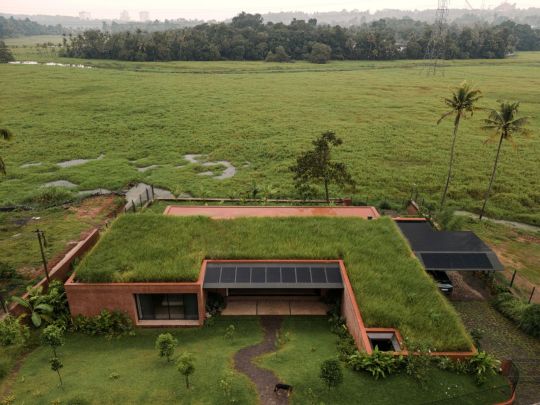
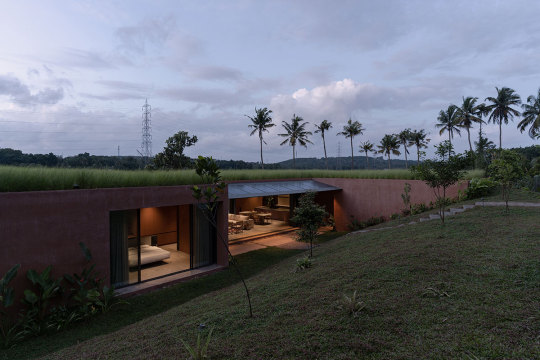
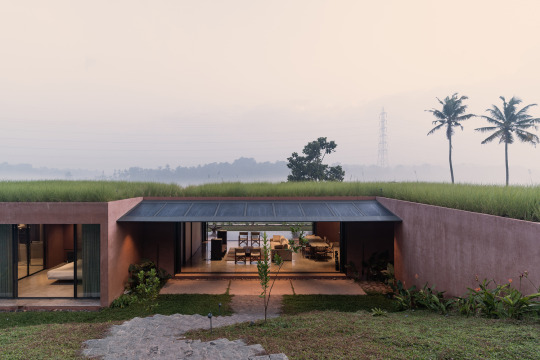
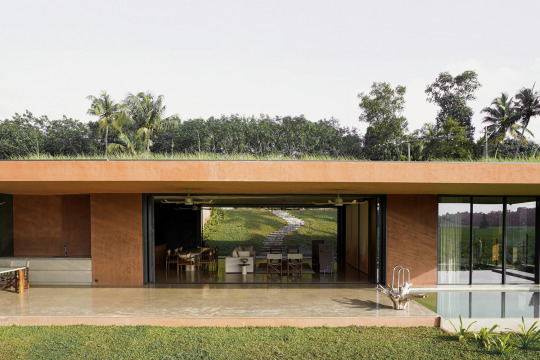
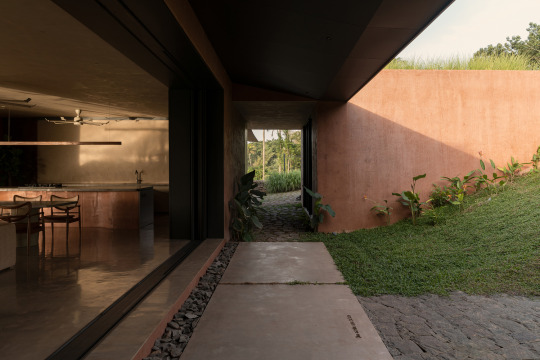
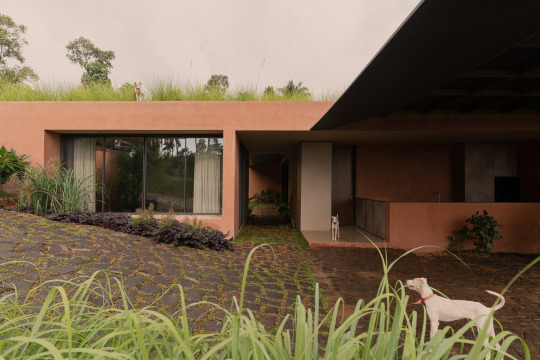

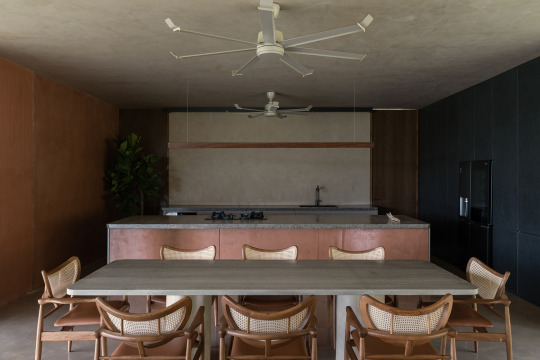
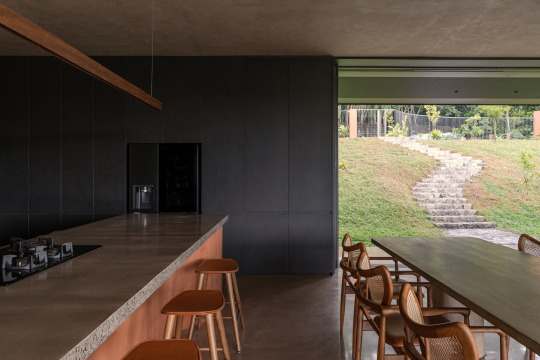
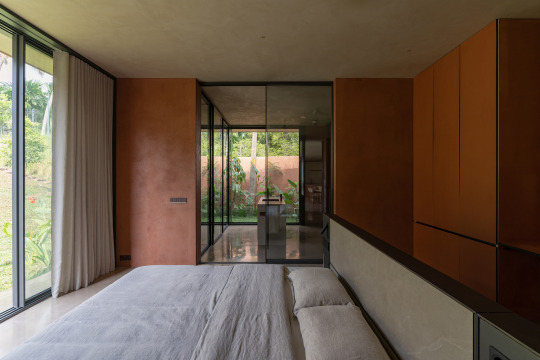

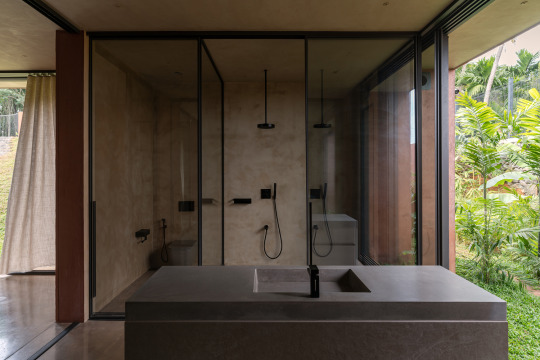
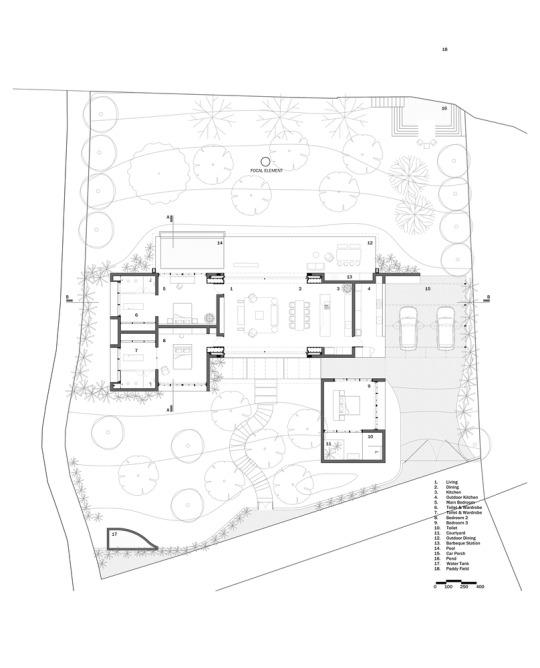
Alarine Earth Home, Koshi, India,
Zarine Jamshedji Architects Conceived in collaboration with builder Cornelis Alan Beuke
Photo Credit: Syam Sreesylam
#art#design#architecture#interior design#interiors#minimalism#earth home#india#koshi#alarine#zarine jamshedji#cornelis alan beuke#solar energy#sustainability#grassland#holistic#green roof
846 notes
·
View notes
Text
youtube
Every week, Eco India brings you stories that inspire you to build a cleaner, greener and better tomorrow.
In the desert of the Indian state of Rajasthan - we take a look at an innovative architecture project in Rajasthan - a girls' school that was initiated with the help of a non-profit organization. Constructed using traditional methods and local materials, the building meets modern standards of energy efficiency and sustainability. At the same time, the school provides an important social impetus for the education of girls in one of the most remote parts of India.
Credits -
Supervising Producer & Voiceover: Nooshin Mowla
Field Producer & Script: Juhi Chaudhary
Video Editor: Richard Kujur
Associate Producer: Ipsita Basu
Director of Photography: Richard Kujur
Executive Producer: Sannuta Raghu
#eco india#scroll.in#solarpunk#desertpunk#india#Rajasthan#school#all girls school#architecture#sustainability#sustainable architecture#desert#solar panels#Youtube
5 notes
·
View notes
Text
Van Bhoj - A Mud House in Delhi NCR
Let us tell you a fact; Sustainable architecture is the future of architecture; and Van Bhoj is a testimony to the beauty & coziness of a naturally built home, without any compromise on quality or comfort. It is a living example of how to live in harmony with your surroundings.
Story of Van Bhoj: When a former mining quarry came into the healing hands of Revathi& Vasanth Kamath, its destiny changed forever. The barren site, ravaged by deep digging for Quartzite and Badarpur, was perfect for the design experiments the pair was to carry out. Hence began the construction of The Kamath House. In 1996, the concept of sustainable livingwas unheard of. In times to come, the house was to stand testimony to how far ahead of their times Revathi & Vasanth were. The implementation of their beliefs in sustainability began right from the start. Mud, Stones, Wood, and everything that was used in construction came from the campus itself. In no time, the arid land started responding to Revathi’s healing touch and started to sprout life. Soon the entire area was teeming with Peepal, Neem, Lemon and many other native trees. The birds returned to build their homes and sing songs of joy. Many other living creatures big & small came back to reclaim their space & play their part in the ecosystem. The peacocks can still be found rejoicing with happiness by breaking into a dance now & then. Little did the couple know that they were not just creating a home but a legacy to be cherished by future generations. Every element is an outcome of a process that has gone through immense consideration. For example, the mud floor across the house is the result of deep foresight. Mud is a material that is readily available, easy to use, cooling, daily maintenance-free, gives a very rustic vibe and looks beautiful. The entire house is designed to harness the energy of the Sun, from the first rays to the last. Large glass windows let in ample sunlight and offer a generous view of the lush green canopies spread throughout the estate.
The house tries to follow the maximum principles of sustainable living. Right from the vernacular construction to wastewater treatment and reuse. The house is a living & breathing lesson in how to live in perfect harmony with Nature.
As you stroll around the house, you might notice the blue figurine in exultation kept near a window and wonder at the sudden appearance of colour in an otherwise earthy-toned space. At first glance, it might look like just another artefact. But as the sun rises and sends in its rays to light up the little corner, you realize that the figurine is exulting in celebration of the warm rays bathing its cold body. Each of the carefully kept artefacts has a reason for being where they are. One cannot help but be in awe of the depth of thought process that has gone into crafting the space out of nothing.
Van Bhoj is a Temple of Sustainability as it possesses special powers to be the centre point of all sustainable leaders across the world. Despite being located in Delhi NCR, it is a paradise with several peacocks, hundreds of monkeys, squirrels, woodpeckers, parrots, eagles, and porcupines living on its premises. It’s an example of animal-human co-existence and most importantly it’s a symbol of resilience that despite climate change and all other climate-related issues, things can be corrected if we decide to return to our age-old practices.
The beloved house of Revathi and Vasanth Kamath is a legacy to be preserved and nurtured. A visit to this temple of sustainability is a visit back in time when worshipping Nature was part of our great Indian culture. Everything flows in perfect rhythm with its surroundings and every little human-made element blends effortlessly with Nature. Van Bhoj is an ideal place to experience sustainable living. It has rainwater harvesting, wastewater treatment, solar cooker, composting and all other sustainable elements.
If you are an architect exploring Sustainable homes, a design enthusiast wanting to see eco-friendly interiors or simply an eco-conscious person wanting to build a self-sustaining home, Ecoplore welcomes you into its flagship experiential eco-home, to see for yourself all the aspects of a Sustainable home.
“A Mud house remains cool in summer without AC.” Times Now says about VanBhoj. The Better India says “A unique house which stands still against climate change” WION News admired “Van Bhoj is a museum of sustainability”
Come and visit this paradise within Delhi NCR.


#sustainability#travel#traditional art#architecture#delhi#india#design#artists on tumblr#building#learning#edutainment#ncr#delhincr#faridabad
1 note
·
View note
Text
Elevate Your Lifestyle: Choose Adani M2K Oyster Arcade
Embrace the Essence of Convenience
Nestled in the bustling Sector 102 of Gurgaon, Adani M2K Oyster Arcade isn’t just another commercial hub—it’s a symbol of convenience and connectivity. With its prime location and seamless accessibility, this vibrant complex offers businesses an unparalleled opportunity to thrive in the heart of one of India’s most dynamic cities. Let’s delve deeper into what…
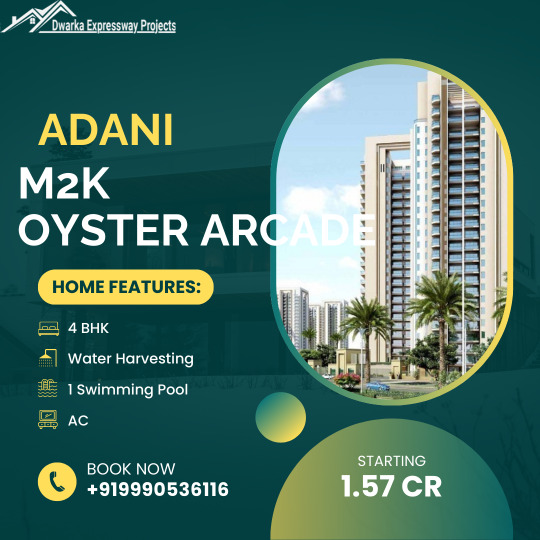
View On WordPress
#Adani M2K Oyster Arcade#Adani M2K Oyster Grande Gurgaon#Adani M2K Oyster Grande Sector 102#Adani M2K Oyster Grande Sector 102 Gurgaon#architecture#gujarat#india#kutch#lifestyle#luxury#real-estate#sustainability#technology
0 notes
Text
Smart Box Cabin Projects: Showcasing Sustainable Prefab in India
Explore our portfolio of Smart Box Cabin projects, showcasing sustainable prefab constructions in India. Witness innovative designs and green building initiatives for modern living.
#Smart Box Cabin projects India#Prefab construction showcase#Modular homes portfolio#Sustainable building projects#Prefabricated structures India#Eco-friendly housing designs#Innovative prefab constructions#Smart living spaces India#Green building initiatives#Prefab architecture showcase#best modular home manufacturers#best peb companies in india#best prefab companies#best prefab home builders in india#best prefab home companies#build innovative prefab#cheap prefab cabins#build innovative solution#commercial shed construction#industrial shed manufacturers
0 notes
Text
Daniel Soh, Winner Stage 1 Co-Lab Sustainability Prize 2023
Mackintosh School of Architecture
'Being An Architect in the Anthropocene' was a project for GSA Co-Lab 1. The theme for this project was 'Recycle and Re-use'. Daniel explored fabric as an unconventional building material. Recycling this material and using it for construction can lead to plugging a considerable gap in the circular economy loop for both fashion and architecture. Research and testing were carried out to explore the possibilities of recycled fabric as a construction material and possible ways in which fabric may sorted, assembled and disassembled in an architectural setting. Proposing to place the pavilion near H&M on Buchanan Street created a visual reminder of the waste produced by fast fashion. The pavilion also served as a communal space for commuters along their journey. The fabric used in the pavilion served to dampen sounds from traffic and enabled the framing of views of Buchanan Street while still offering privacy to commuters resting within. Detailed investigations were carried out to ensure each component of the pavilion could be sourced locally and had a designated way to be recycled once the pavilion had reached the end of its life. Given the temporal nature of the pavilion, some components could be borrowed from existing construction sites in the vicinity. Daniel believes collaboration and planning could significantly reduce the carbon footprint of our economy and ensure that one man's waste could indeed be another's treasure.
Studioworks1 P3 Social Architecture in the Global South
Daniel also investigated social sustainability in his individual research project for Studioworks 1. In-depth research into social architecture from around the world, including the PREVI Social Housing Project in Lima, Peru and the Alexandra Road Social Housing Project in London, UK. Taking this understanding, he further investigated an informal settlement slated to be cleared in Dharavi, Mumbai, India. In his studies, he detailed the macro growth and formation of informal settlements and the micro development of individual dwellings within the settlement. The vernacular and incremental nature of the buildings created a vibrant social setting for its inhabitants. Daniel is convinced that we could learn from their values and practices. Further studies and drawings were done to illustrate the social dynamic within the informal settlements and the complex nature and issues when governments intervene via slum upgrading or clearing. Considering half of the building stock has yet to be built - projected to be in cities of the global south, studying, understanding and collaborating with stakeholders and residents is essential to designing a future where everyone has access to disaster-resistant, socially abundant and ecological buildings.
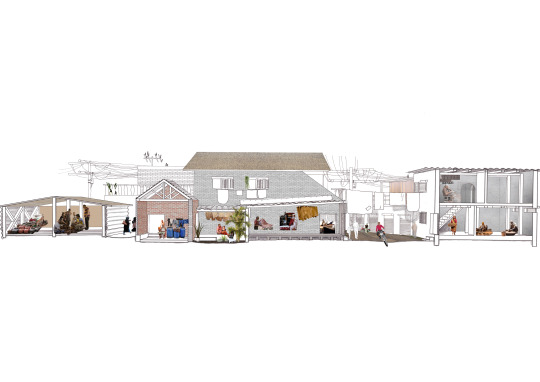





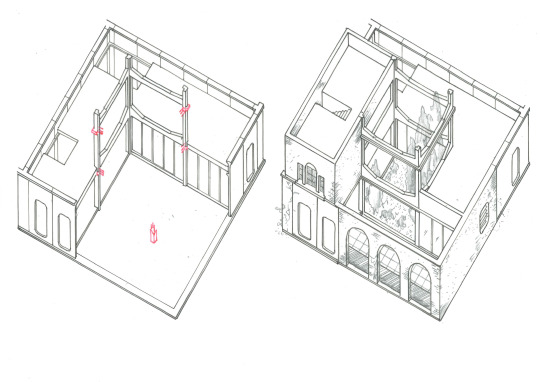
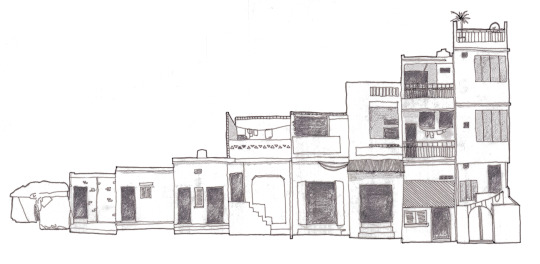
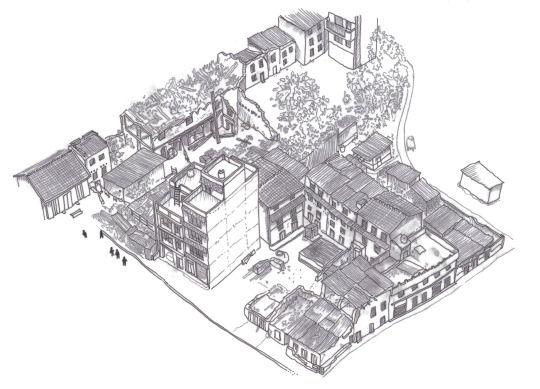



More here
#sustainability#climate crisis#architecture#social architecture#PREVI#Lima#Peru#London#Dharavi#Mumbai#India#Social Housing#slum
0 notes
Text
Unsung essential Architectural practices of India
By creating unique suitable environments that enhance our health, safety, and comfort, architecture has influenced the molding of human civilization It also imparts notable buildings across the world a sense of wonder and mystique
0 notes
Text
Shree Latha, Founder of JPLatha Orchards presents a talk with Greenpreneur in India's First Green Talk Show
Shree Latha, Founder of JPLatha Orchards presents a talk with Greenpreneur in India’s First Green Talk Show
JPLatha Orchards is our own farm. JP is my husband name and me Sree Latha. Ten years back I purchased barren land after quitting the IT sector with a passion for Natural farming. (Organic).
We practice Natural methods of farming under the guidance of Sir Subash Palekar ji, Padma Shree Awardee. Famous Agriculturist in India.
At present we have around ten varieties of mangoes and Mosambi on our…

View On WordPress
#AGROTIS#architecture#Famous Agriculturist in India#JPLatha Orchards#JPLatha Orchards farm#Natural farming#Natural methods of farming#Organic Farm#Organic Farm in Garladinne#Organic farming#organic stores in Hyderabad#Sree Latha#Sustainability
0 notes
Photo
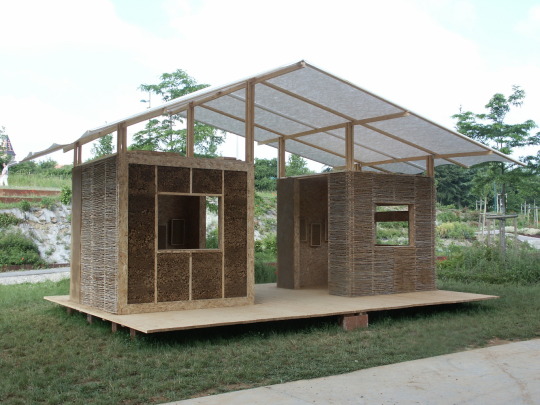
Pioneering the Revival of Earth Architecture: Egypt, France, and India
The current ecological crisis has sparked a renewed interest in ancient traditions, especially among architects. The need for reliable and sustainable eco-architecture has led many international architects to explore vernacular eco-construction. A common belief is that vernacular practices are embedded in their time, unable to find a place in the contemporary built environment. However, many examples across the world show how knowledgeable artisans are capable of re-utilizing their skills in new ways.
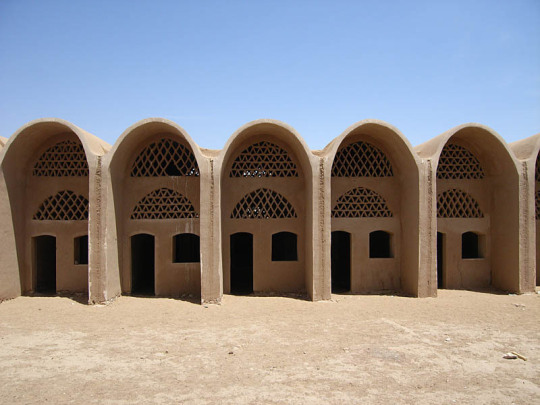



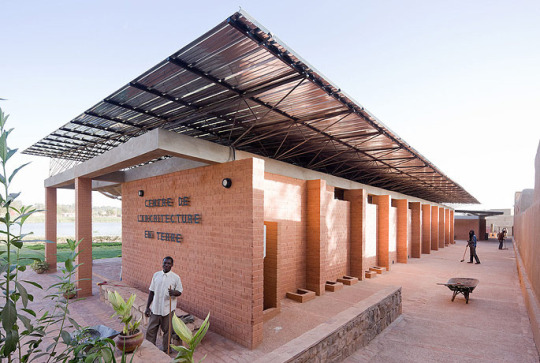
230 notes
·
View notes
Text
#top architectural firm in india#sustainable architecture design company#top interior firm in mumbai#top data center design company#workspace design company in mumbai#commercial interior design company in mumbai#apices#sustainable architecture design solutions#apices studio#best design firm in india
0 notes
Photo



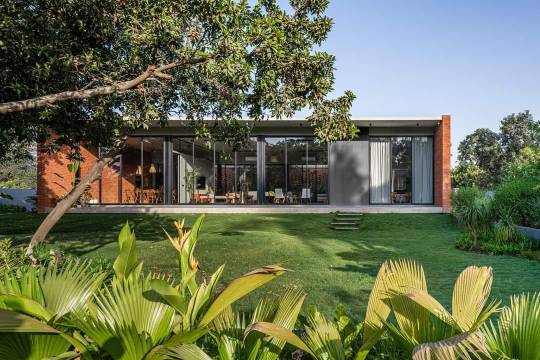


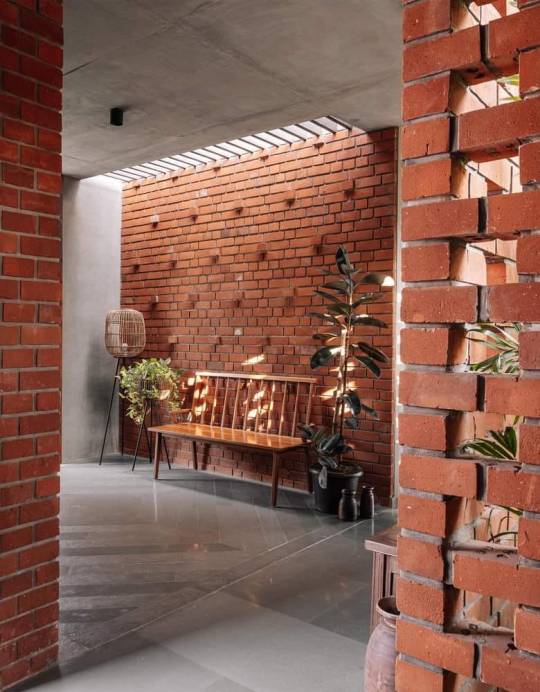

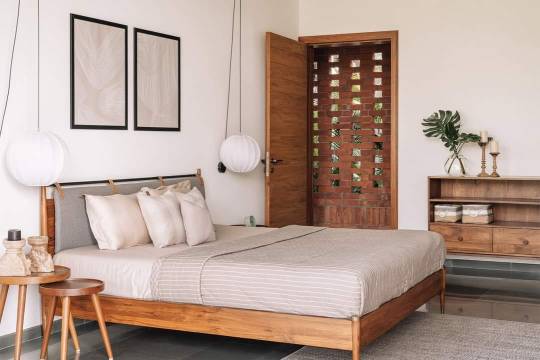
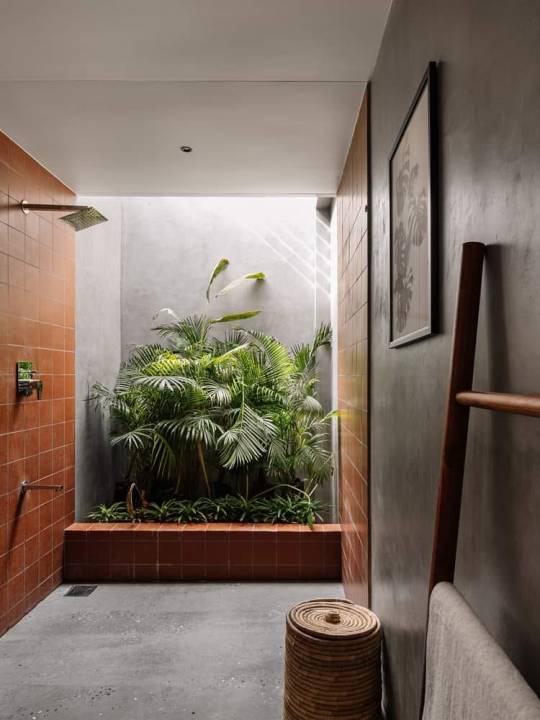
The Weave House, Navsari, India,
The BAD Studio
#art#design#architecture#india#interiors#interiordesign#navsari#weave#luxurylifestyle#luxuryhouses#luxuryhomes#bad studio#sustainability#sustainable architecture#bricks#minimalism
189 notes
·
View notes
Note
Why u have such a cool styleeeee ?!?!
errrrrr........ urm..... pixel brush, size 4.... fluffy cat loaf. do all the lines double, many circle. funny......uuuuuuuuuuuu
The Industrial Revolution, also known as the First Industrial Revolution, was a period of global transition of human economy towards more efficient and stable manufacturing processes that succeeded the Agricultural Revolution, starting from Great Britain, continental Europe, and the United States, that occurred during the period from around 1760 to about 1820–1840.[1] This transition included going from hand production methods to machines; new chemical manufacturing and iron production processes; the increasing use of water power and steam power; the development of machine tools; and the rise of the mechanized factory system. Output greatly increased, and a result was an unprecedented rise in population and in the rate of population growth. The textile industry was the first to use modern production methods,[2]: 40 and textiles became the dominant industry in terms of employment, value of output, and capital invested.
On a structural level the Industrial Revolution asked society the so-called social question, demanding new ideas for managing large groups of individuals. Visible poverty on one hand and growing population and materialistic wealth on the other caused tensions between the very rich and the poorest people within society.[3] These tensions were sometimes violently released[4] and led to philosophical ideas such as socialism, communism and anarchism.
The Industrial Revolution began in Great Britain, and many of the technological and architectural innovations were of British origin.[5][6] By the mid-18th century, Britain was the world's leading commercial nation,[7] controlling a global trading empire with colonies in North America and the Caribbean. Britain had major military and political hegemony on the Indian subcontinent; particularly with the proto-industrialised Mughal Bengal, through the activities of the East India Company.[8][9][10][11] The development of trade and the rise of business were among the major causes of the Industrial Revolution.[2]: 15
The Industrial Revolution marked a major turning point in history. Comparable only to humanity's adoption of agriculture with respect to material advancement,[12] the Industrial Revolution influenced in some way almost every aspect of daily life. In particular, average income and population began to exhibit unprecedented sustained growth. Some economists have said the most important effect of the Industrial Revolution was that the standard of living for the general population in the Western world began to increase consistently for the first time in history, although others have said that it did not begin to improve meaningfully until the late 19th and 20th centuries.[13][14][15] GDP per capita was broadly stable before the Industrial Revolution and the emergence of the modern capitalist economy,[16] while the Industrial Revolution began an era of per-capita economic growth in capitalist economies.[17] Economic historians agree that the onset of the Industrial Revolution is the most important event in human history since the domestication of animals and plants.[18]
The precise start and end of the Industrial Revolution is still debated among historians, as is the pace of economic and social changes.[19][20][21][22] Eric Hobsbawm held that the Industrial Revolution began in Britain in the 1780s and was not fully felt until the 1830s or 1840s,[19] while T. S. Ashton held that it occurred roughly between 1760 and 1830.[20] Rapid industrialisation first began in Britain, starting with mechanized textiles spinning in the 1780s,[23] with high rates of growth in steam power and iron production occurring after 1800. Mechanized textile production spread from Great Britain to continental Europe and the United States in the early 19th century, with important centres of textiles, iron and coal emerging in Belgium and the United States and later textiles in France.[2]
An economic recession occurred from the late 1830s to the early 1840s when the adoption of the Industrial Revolution's early innovations, such as mechanized spinning and weaving, slowed as their markets matured. Innovations developed late in the period, such as the increasing adoption of locomotives, steamboats and steamships, and hot blast iron smelting. New technologies such as the electrical telegraph, widely introduced in the 1840s and 1850s, were not powerful enough to drive high rates of growth. Rapid economic growth began to occur after 1870, springing from a new group of innovations in what has been called the Second Industrial Revolution. These innovations included new steel-making processes, mass production, assembly lines, electrical grid systems, the large-scale manufacture of machine tools, and the use of increasingly advanced machinery in steam-powered factories.[2][24][25][26]
22 notes
·
View notes
Text
Anyway in uni Marinette starts dating Priya, an architecture student who’s main pastime is board games. They met when Priya hired Marinette to help her with building models as deadlines were approaching. Marinette put the moves on her. Priya experiences gay panic. Oops she’s a lesbian now.
The two have a bit of a turbulent relationship at first what with Priya figuring out how to come out of the closet she didn’t know she was in in the first place and Marinette, while not having a particular super nemesis at the time, still occupied with guardian and hero duties but the two eventually settle and move to the US together for a couple of years so Priya can finish her studies and Marinette can start working. They get engaged and plan a three day wedding.
Shit hits the fan when Marinette has to move back to Paris for Super reasons just as Priya gets offered an opportunity designing affordable self sustaining homes in India. Marinette wants Priya to go with her to Paris and proceed with the wedding as planned, Priya wants to postpone the wedding and have Marinette join her in India. Things escalate with Priya realizing she can’t handle being a superhero’s s/o and wanting Marinette to quit so they can have a normal life together. Marinette can’t do that. They break up. Marinette gives up any hope of ever finding love again.
23 notes
·
View notes
Text
Top Architects in Indore: A Comprehensive Guide
Indore, the largest city in Madhya Pradesh, is known for its vibrant culture, historical significance, and rapid urban development. As the city continues to grow, the demand for innovative and sustainable architectural solutions has surged. Whether you are planning to build a residential home, a commercial complex, or a public space, choosing the right architect is crucial. In this comprehensive guide, we explore the list of architects in Indore who are shaping the city's skyline with their exceptional design and architectural prowess.

List of Top Architects in Indore - Best Architecture Firms
1. Abha Narain Lambah Associates
Abha Narain Lambah Associates is a renowned architectural firm specializing in conservation and restoration. Their work in Indore includes the meticulous restoration of heritage structures, blending historical significance with modern functionality. The firm is celebrated for its commitment to preserving India's architectural heritage, making them a top choice for projects that require a delicate balance of old and new.
2. Manoj Patel Design Studio
Manoj Patel Design Studio is an innovative architectural firm that focuses on sustainable and eco-friendly design. The studio's projects in Indore are characterized by their use of recycled materials, energy-efficient technologies, and green building practices. Manoj Patel Design Studio is known for creating aesthetically pleasing and environmentally responsible spaces, making them a favourite among eco-conscious clients.
3. Design Studio – The Architects
Design Studio – The Architects is a well-established firm in Indore, known for its modern and contemporary design approach. The firm offers a wide range of services, including residential, commercial, and institutional architecture. Their portfolio showcases a variety of projects that emphasize functionality, aesthetics, and sustainability. Their attention to detail and client-centric approach have earned them a strong reputation in the industry.
4. The Grid Architects
The Grid Architects is a leading architecture and interior designer firm with a strong presence in Indore. The firm is known for its innovative design solutions that cater to the specific needs and aspirations of their clients. Their projects often feature a blend of traditional and modern elements, creating unique and timeless spaces. The Grid Architects' commitment to quality and excellence has made them a sought-after name in Indore's architectural landscape.
5. Aakruti Architects
Aakruti Architects is a prominent architecture and interior design firm in Indore. The firm specializes in residential and commercial projects, offering bespoke design solutions that reflect the client's vision and lifestyle. Aakruti Architects is known for their creative approach, attention to detail, and commitment to delivering high-quality projects. Their portfolio includes a variety of innovative and aesthetically pleasing designs that cater to the diverse needs of their clients.
6. Design Atelier
Design Atelier is a dynamic architectural firm based in Indore, known for its contemporary design philosophy and innovative solutions. The firm offers a comprehensive range of services, including architectural design, interior design, and project management. Design Atelier's projects are characterized by their sleek, modern aesthetics and functional design elements. Their ability to transform spaces into inspiring environments has made them a preferred choice for many clients in Indore.
7. Shri Designs
Shri Designs is a reputed architecture and interior design firm in Indore, known for their personalized and client-focused approach. The firm specializes in residential, commercial, and hospitality projects, offering tailored design solutions that meet the specific needs of their clients. Shri Designs is celebrated for their creativity, attention to detail, and commitment to excellence. Their diverse portfolio showcases their ability to create beautiful and functional spaces.
8. Studio8
Studio8 is an architectural firm that has made a significant mark in Indore with its innovative and sustainable design solutions. The firm's projects range from residential homes to large commercial complexes, each reflecting their commitment to quality and sustainability. Studio8 is known for their ability to integrate modern design principles with eco-friendly practices, creating spaces that are both aesthetically pleasing and environmentally responsible.
9. Aashray Design Consultants
Aashray Design Consultants is a well-known architecture and interior design firm in Indore, offering a wide range of services for residential, commercial, and institutional projects. The firm is recognized for their creative design solutions, attention to detail, and ability to deliver projects on time and within budget. Aashray Design Consultants' portfolio includes a variety of innovative and functional designs that cater to the unique needs of their clients.
10. A3 Architecture
A3 Architecture is a leading architectural firm in Indore, known for their contemporary design approach and innovative solutions. The firm offers a comprehensive range of services, including architectural design, interior design, and project management. A3 Architecture's projects are characterized by their modern aesthetics, functional design elements, and attention to detail. Their commitment to delivering high-quality projects has made them a trusted name in Indore's architectural landscape.
Conclusion:
Indore's architectural landscape is rich and diverse, with numerous top-tier architects offering a wide range of design philosophies and specializations. Whether you are looking for sustainable design solutions, innovative architectural expressions, or bespoke design services, the architects listed above have the skills and experience to bring your vision to life.
By choosing the right architect, you can ensure that your project is executed to the highest standards, creating a space that is not only functional but also inspiring. The right architect will help you navigate the complexities of design and construction, making the process of building your dream home or commercial project in Indore a seamless and rewarding experience.
6 notes
·
View notes
Text
If you ever had pastries at breakfast, drank soy milk, used soaps at home, or built yourself a nice flat-pack piece of furniture, you may have contributed to deforestation and climate change.
Every item has a price—but the cost isn’t felt only in our pockets. Hidden in that price is a complex chain of production, encompassing economic, social, and environmental relations that sustain livelihoods and, unfortunately, contribute to habitat destruction, deforestation, and the warming of our planet.
Approximately 4 billion hectares of forest around the world act as a carbon sink which, over the past two decades, has annually absorbed a net 7.6 billion metric tons of CO2. That’s the equivalent of 1.5 times the annual emissions of the US.
Conversely, a cleared forest becomes a carbon source. Many factors lead to forest clearing, but the root cause is economic. Farmers cut down the forest to expand their farms, support cattle grazing, harvest timber, mine minerals, and build infrastructure such as roads. Until that economic pressure goes away, the clearing may continue.
In 2024, however, we are going to see a big boost to global efforts to fight deforestation. New EU legislation will make it illegal to sell or export a range of commodities if they have been produced on deforested land. Sellers will need to identify exactly where their product originates, down to the geolocation of the plot. Penalties are harsh, including bans and fines of up to 4 percent of the offender's annual EU-wide turnover. As such, industry pushback has been strong, claiming that the costs are too high or the requirements are too onerous. Like many global frameworks, this initiative is being led by the EU, with other countries sure to follow, as the so-called Brussels Effect pressures ever more jurisdictions to adopt its methods.
The impact of these measures will only be as strong as the enforcement and, in 2024, we will see new ways of doing that digitally. At Farmerline (which I cofounded), for instance, we have been working on supply chain traceability for over a decade. We incentivize rule-following by making it beneficial.
When we digitize farmers and allow them and other stakeholders to track their products from soil to shelf, they also gain access to a suite of other products: the latest, most sustainable farming practices in their own language, access to flexible financing to fund climate-smart products such as drought-resistant seeds, solar irrigation systems and organic fertilizers, and the ability to earn more through international commodity markets.
Digitization helps build resilience and lasting wealth for the smallholders and helps save the environment. Another example is the World Economic Forum’s OneMap—an open-source privacy-preserving digital tool which helps governments use geospatial and farmer data to improve planning and decision making in agriculture and land. In India, the Data Empowerment Protection Architecture also provides a secure consent-based data-sharing framework to accelerate global financial inclusion.
In 2024 we will also see more food companies and food certification bodies leverage digital payment tools, like mobile money, to ensure farmers’ pay is not only direct and transparent, but also better if they comply with deforestation regulations.
The fight against deforestation will also be made easier by developments in hardware technology. New, lightweight drones from startups such as AirSeed can plant seeds, while further up, mini-satellites, such as those from Planet Labs, are taking millions of images per week, allowing governments and NGOs to track areas being deforested in near-real time. In Rwanda, researchers are using AI and the aerial footage captured by Planet Labs to calculate, monitor, and estimate the carbon stock of the entire country.
With these advances in software and hard-tech, in 2024, the global fight against deforestation will finally start to grow new shoots.
5 notes
·
View notes